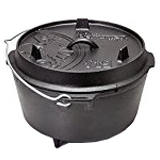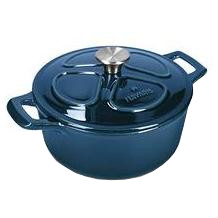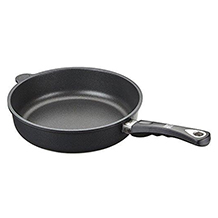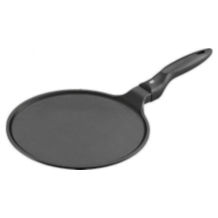Pressure cooker purchasing advice: how to choose the right product
- The most important facts in brief
- Pressure cookers are sealed airtight with a lid to cook food under pressure.
- Cooking is not only faster than with an ordinary saucepan, but also particularly gentle.
- When buying, pay attention to the capacity, cooker suitability, cleaning effort, safety system and accessories.
- Accessories include inserts that, for example, allow cooking on several levels or prevent the food from coming into direct contact with the water.
- Follow the instructions for use carefully to achieve the best results.
Pressure cooker – cooking for those in a hurry
Pressure cookers allow you to prepare your food quickly by cooking under high pressure. Dishes that previously required hours of toil in the kitchen are now ready in a fraction of the time. In everyday life, you have more time for other things: upcoming visitors, your own children or a beloved hobby. Even grandparents used the pressure cooker for their goulash and stews and saved themselves a lot of effort.
You can cook meat, fish and side dishes such as potatoes or vegetables in one step with practical inserts. This means you don’t have to stand in the kitchen all day for the big Christmas dinner. You have much less stress and more time to spend the holidays with your family.
The predecessor of the modern pressure cooker was developed at the end of the 17th century by the French mathematician and physicist Denis Papin in the form of the Papin’s pot. With this pot, he was able to influence the boiling temperature by varying the pressure settings. The first modern pressure cooker was released by Silit in the 1920s and was named “Sicomatic”. Thanks to a number of practical innovations, this became an important kitchen helper that is now indispensable. Modern pressure cookers are versatile and there is hardly any food that cannot be prepared with them.
How a pressure cooker works
Pressure cookers work by building up pressure. The lid on the cooker is sealed pressure-tight and cannot be easily released. As soon as the tightly closed pressure cooker heats up, the water inside evaporates. The pressure in the appliance rises rapidly, as the resulting water vapour cannot escape.
The increased pressure raises the boiling point of the water. Normally it is 100 degrees Celsius; however, the overpressure in the pressure cooker increases this value up to 120 degrees Celsius. This means that the food is cooked at higher temperatures than in a regular saucepan. They are therefore cooked much faster. If the pressure inside the pressure cooker is too high, it releases the steam with the help of a valve. By pressing the release valve, the pot is depressurised again and you can open it.
Many appliances have at least two pressure settings: one for gentle cooking at slightly lower pressure and one for fast cooking. This allows the user to adjust the pressure to the ingredients to be processed.
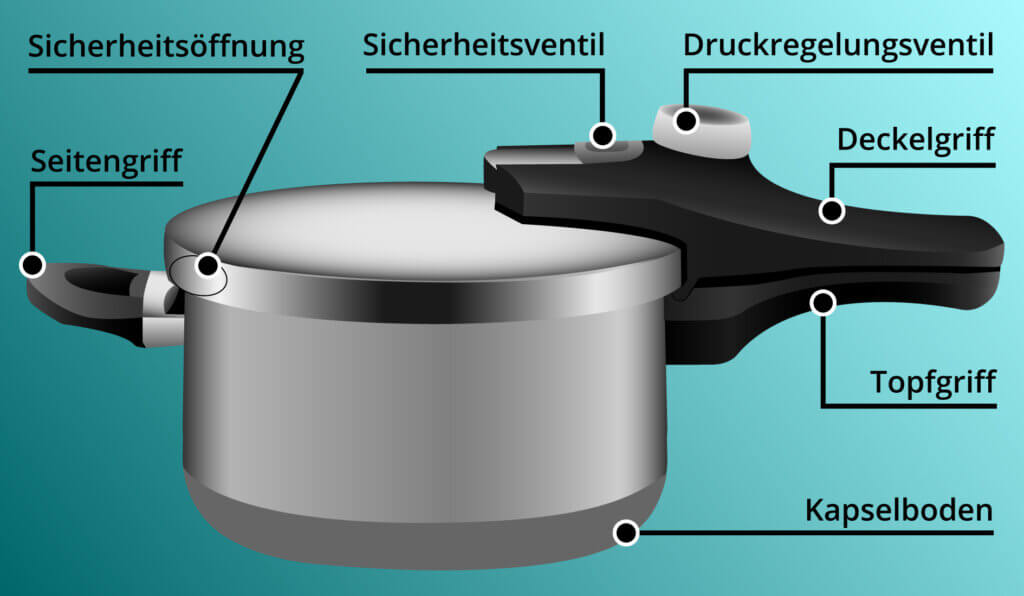
A pressure cooker has these advantages and disadvantages
Speed, as the name implies, is one of the biggest advantages of the pressure cooker. Ingredients, dishes and whole menus are cooked much faster than with a regular cooker. Depending on the dish and cooking level, preparation time can be reduced by 50 to 70 percent. Rice is ready in about 7 minutes, roast beef in 10 minutes and unsoaked beans take about 20 minutes. Almost anything that can be prepared in an ordinary saucepan can also be done in a pressure cooker – but in a much shorter time. The short cooking time improves the content of vitamins and nutrients; use inserts to avoid direct contact of the food with water. Another advantage is energy efficiency. The test editors of Stiftung Warentest saved about 30 per cent energy when cooking potatoes with a pressure cooker, for example. Those who use a pressure cooker therefore not only save electricity, but also do something for the environment.
In contrast to classic cooking pots, using a pressure cooker is a little more complicated. The lid can only be lifted off at the end of the cooking time and cannot be seen. This means that the consumer must follow the cooking times and instructions carefully to achieve the best result. The first attempts may go wrong: the food is either overcooked or undercooked. It is true that cleaning is more complicated than with classic cooking pots, as not all parts are dishwasher-safe. Nevertheless, you should clean the pressure cooker thoroughly so that it does not wear out in important places such as the valve or the sealing ring. Otherwise, accidents such as scalding can occur. Improper handling can also lead to minor mishaps.
What the pressure cooker can cook
Pressure cookers have been known for decades for quickly prepared goulash and other stews. With a classic saucepan, such a dish takes several hours, but in a pressure cooker it takes less than half an hour. All kinds of vegetables, meat and fish can easily be prepared in this pot.
Parents sometimes process their baby food into porridge in the pressure cooker. A gently prepared food with lots of nutrients is very important for the child. In addition, you can decide for yourself what goes into the pot. With a little water in the pressure cooker, you can even sterilise the baby bottles.
If you have to create a sumptuous meal for the next family celebration, a large pressure cooker saves you time and effort. Particularly practical is the possibility of using steamer inserts to prepare several ingredients at the same time without them mixing up.
The pressure cooker can also be used as a juicer. To do this, fill the pot with the minimum amount of water and add the fruit in a perforated insert. On full power, the juice is ready in five minutes.
Pet owners are more often confronted with a sick pet. Food from the pressure cooker is much more digestible and therefore better for illnesses. Homemade food is good for the beloved pet.
However, you cannot prepare food such as noodles and rice with a pressure cooker; the result is mushy and unappetising. The same goes for oatmeal and grains like wheat or spelt. A normal cooking pot is the better choice in these cases.
The concept
The pressure cooker is also called a pressure pot, pressure cooker, pressure cooker or Papin’s pot. Although some synonyms have “steam” in their name, the pressure cooker or steamer is a completely different appliance. Although the food is prepared with steam here too, it is done without pressure. Instead, the food is gently cooked over a water bath.
What to look for when buying a pressure cooker
Anyone considering a pressure cooker should consider a few factors. These include, for example, the capacity, the range of applications, possible accessories and the budget. A pressure cooker can cost under 50 or several hundred euros, depending on the size and features.
The right size
The capacity of a pressure cooker depends on the number of people in the household. There are pressure cookers with a capacity of between 2.5 and 10 litres. People who live alone or with only one other person will do well with a size of 2.5 to 4 litres; flat-sharing communities or families with three to four people need a volume of at least 4 to 6 litres. Larger households with four or more people need large pressure cookers that can hold 8 to 10 litres.
However, some kind of buffer is recommended. If you live alone but occasionally have guests or like to cook ahead for several days, you should go for a larger capacity. A pressure cooker with a capacity of 6 litres is a good middle ground here. Moreover, a pressure cooker should only be filled two-thirds full. So if you are very tight on size, you can sometimes find yourself in an awkward situation. Larger models, however, are not light, especially when filled. So if you can’t or don’t want to carry a heavy pot or use it only rarely, you should choose a smaller model.
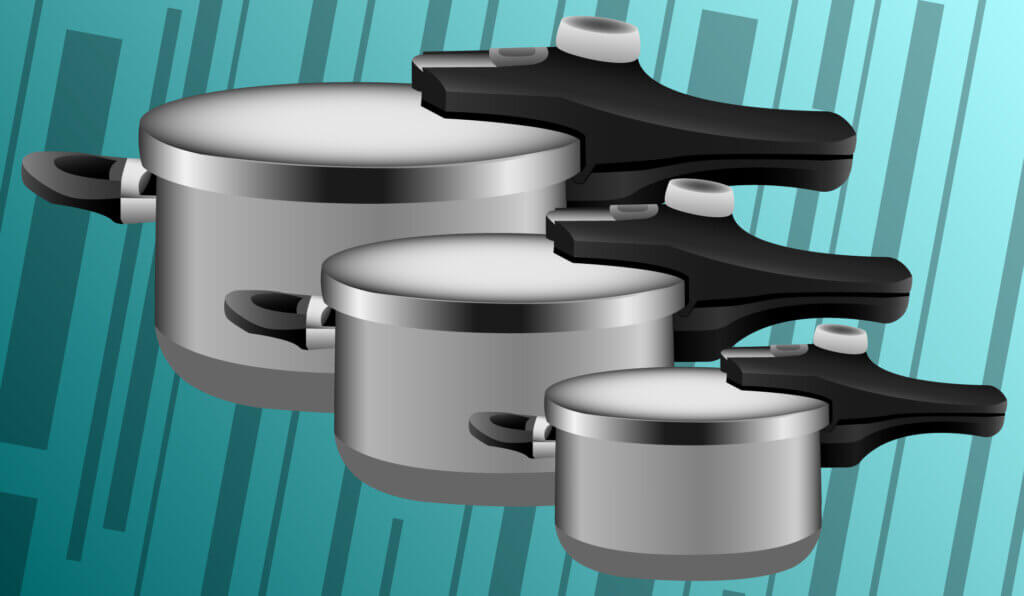
For every cooker?
Not every pressure cooker is suitable for every type of cooker. Many modern pressure cooker models can be used on all types of cookers, but induction cookers are often a problem. If you own an induction cooker and like to look for discounts on the internet or are considering products from lesser-known brands, you should pay particular attention to this suitability.
Easy cleaning
Since cleaning a pressure cooker is more extensive than with a classic saucepan, the user should make it as easy as possible. A dishwasher makes your work easier, but not all components of a pressure cooker are dishwasher-safe. Seals and other small parts such as the valve should be cleaned by hand. For the other components, such as the pot itself or the lid, it depends on the manufacturer and the model. So the buyer should definitely make sure that at least the pot can be cleaned in the dishwasher to save time.
Safety first
Today’s pressure cookers have a very high safety standard, and it is virtually no longer the case that they explode. As soon as the appliance is in use and the pressure has built up inside, the lid can no longer be opened. This is only possible once the pressure cooker has evaporated. A safety device, such as safety cams, prevents pressure from building up if the lid is not secure, as well as opening during cooking. If the pressure cooker heats up too much, which can cause overpressure, the valves automatically release the pressure. If the control valve becomes blocked or does not work properly for other reasons, the safety valve takes over to release the pressure. Heat-repellent safety handles prevent burns. A pressure cooker must have at least a triple safety system (control valve, safety valve and safety lid).
Pressure cookers sold in the EU must pass a type examination. This is part of an EU directive on appliances that work with pressure. With the CE marking, the manufacturer declares that his product complies with EU safety regulations. If you buy pressure cookers outside the EU, you should examine the safety precautions carefully, as the standards in other countries often differ.
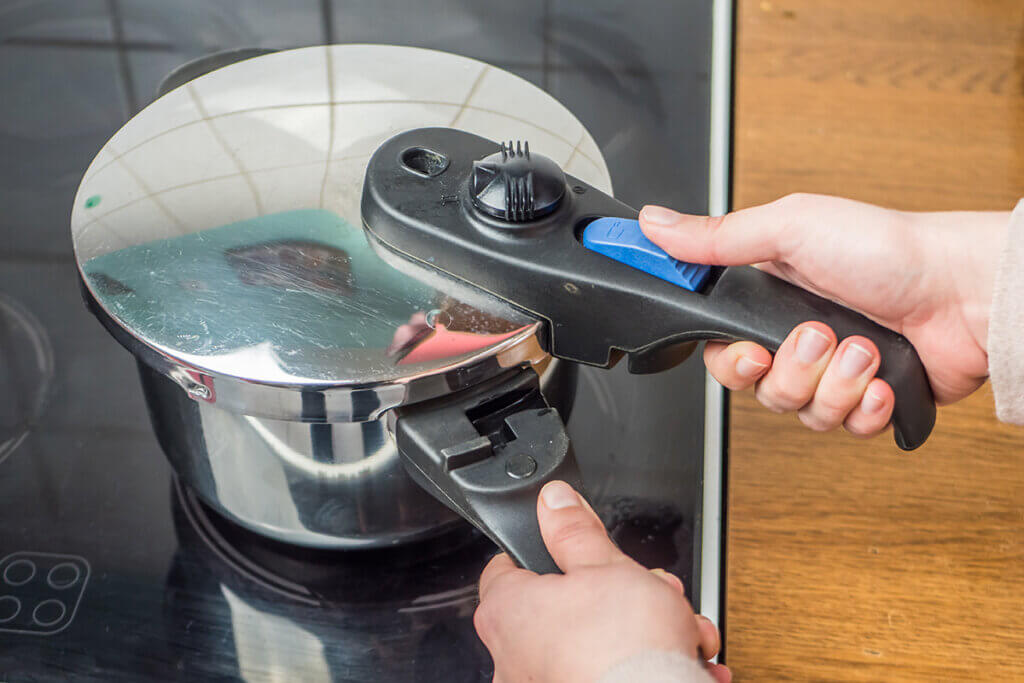
The right accessories
Some pressure cookers come with various accessories. A replacement sealing ring is very useful, as the pot is not functional without a sealing ring and this can become porous over time. Various inserts ensure optimal results during preparation. Depending on the type of vegetables and cereals, but also for some main dishes, these are recommended as they not only prevent burning but also make it easier to remove from the pressure cooker.
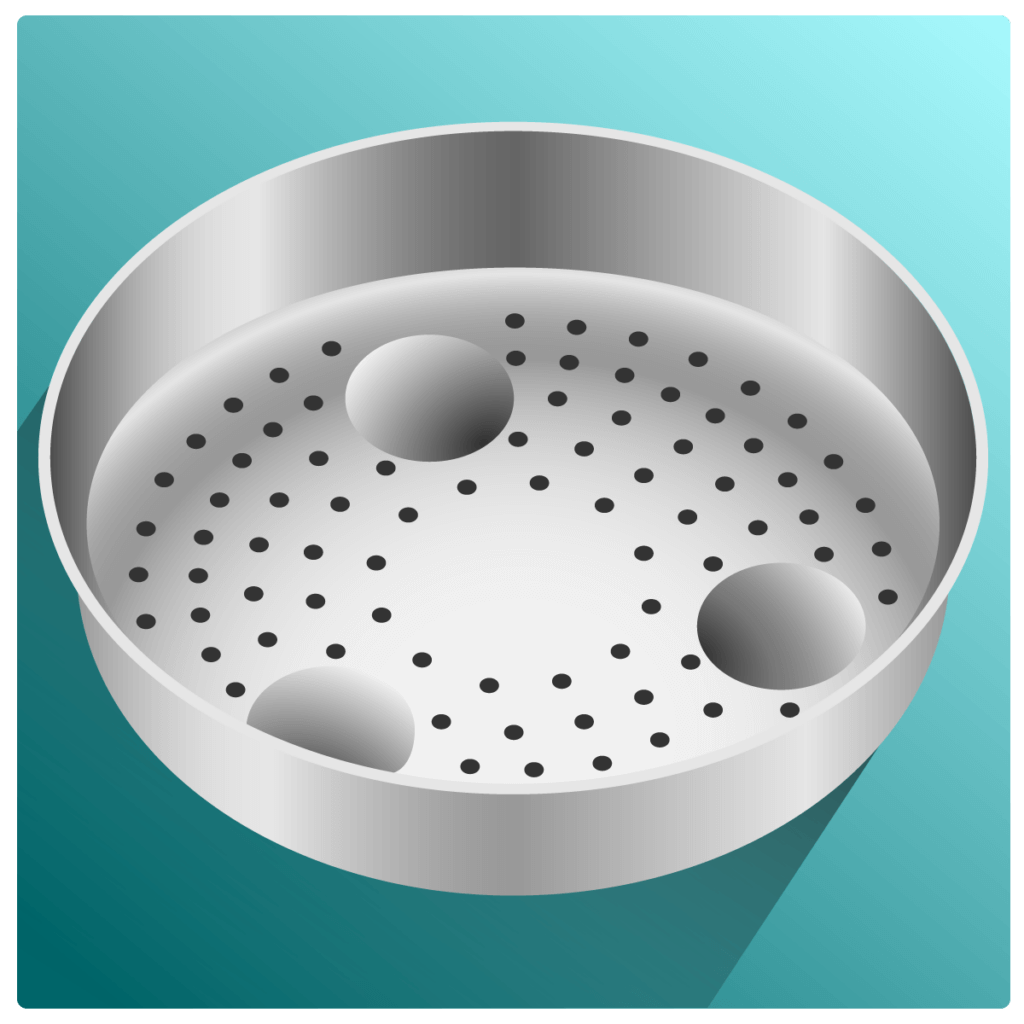
A strainer insert, also called an insert basket or steamer insert, is particularly suitable for heating and blanching vegetables as well as quickly decaying foods. This insert is specialised for steam cooking; you can use it in the pressure cooker as well as in the conventional saucepan.
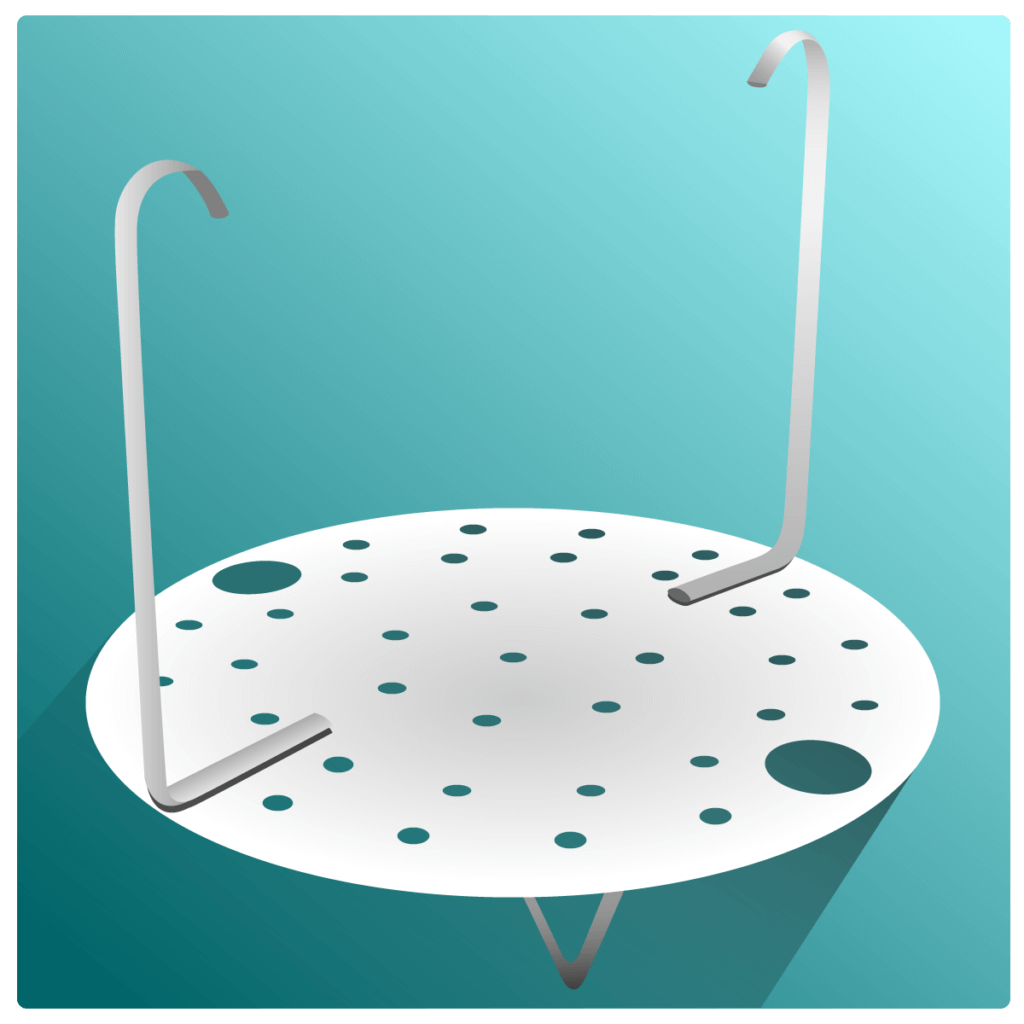
With a perforated insert, vegetables and fish are prepared particularly gently, as the food does not come into direct contact with water. The holes ensure that the steam is evenly distributed.
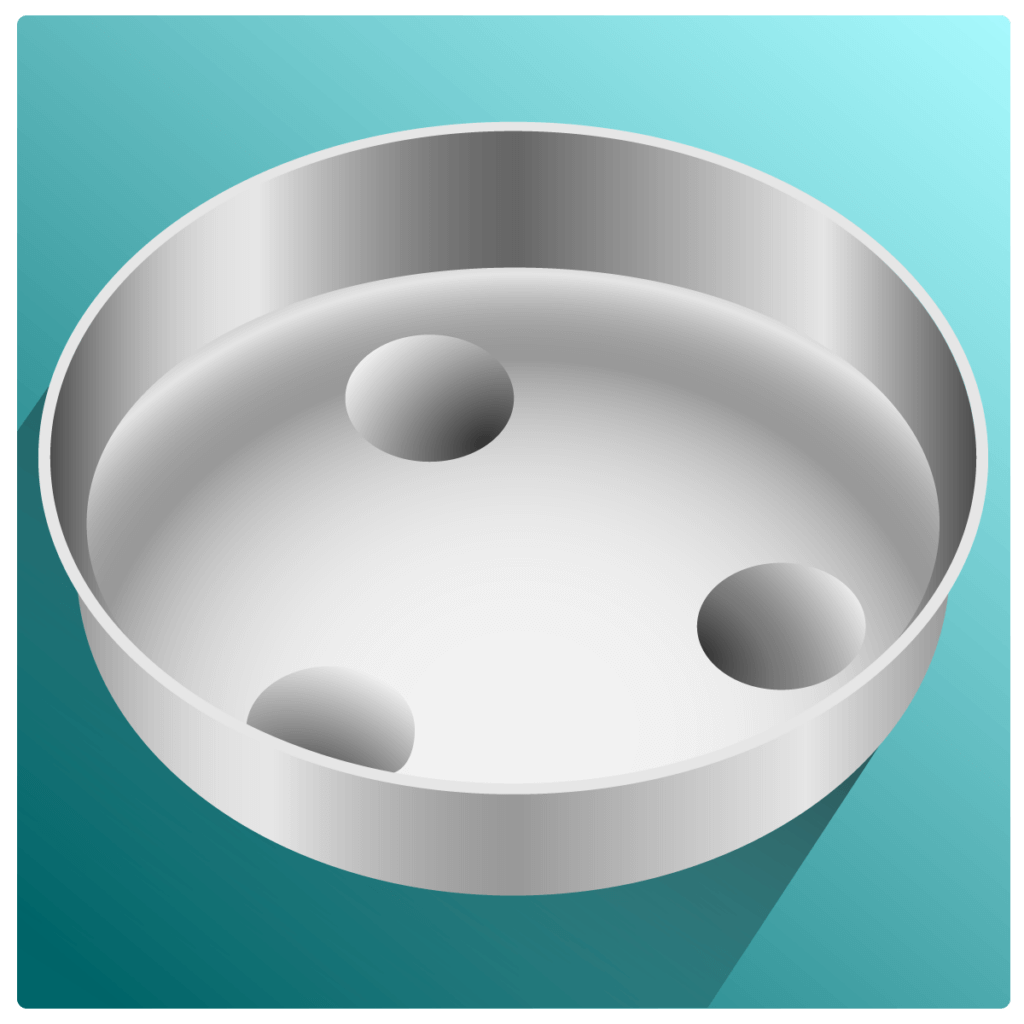
An unperforated insert facilitates the preparation of frozen food. Here, too, the food is not directly in the hot water. The liquid, for example a sauce, does not run off in this insert.
The perforated and non-perforated inserts, in combination, make it possible to cook several components of your menu at the same time. For such tiered cooking, place one insert with food to be cooked on the associated tripod, which prevents contact with the floor, and place the next insert on top.
If you like to cook large quantities of potatoes, you can get a potato cooking insert. However, this is not absolutely necessary, but rather a nice extra.
Direct contact with water
The less direct contact the ingredients have with water in the pressure cooker, the more nutrients are preserved. Vegetable ingredients release their nutrients into the water; if the water is washed away, the nutrients are also lost.
How to use a pressure cooker
If you want to use a pressure cooker, there is one thing you must not forget: the model’s instructions for use. They will tell you exactly which foods should be cooked and for how long, how much water is needed and what settings need to be made on the pot. Although the procedure depends on the particular pressure cooker, general steps can be defined.
First, you must prepare the food to be cooked, for example, cut the potatoes evenly to the right size. Then you can fill the pressure cooker. The food should not touch the inside of the lid. If you put several ingredients in at the same time, make sure that the cooking time of the food is approximately the same. Otherwise, one part may be overcooked or another undercooked. After the food comes the liquid. The recommended amount can be found in the instructions for use. Generally, at least between 200 and 300 millilitres of liquid are necessary. The maximum amount of food and liquid must not exceed two thirds of the capacity. If the food foams a lot, for example pulses, the filling quantity should only be half.
Close the lid tightly and set the cooking level. Usually you choose between a gentle and a fast cooking level. After you have turned on the hob, the pressure builds up in the pressure cooker. As soon as the right temperature is reached, you can turn off the cooker. You can tell when the valve is releasing excess air, which causes it to hiss, or by an indicator on the valve. Some pressure cookers have a traffic light system, others a simple marking.
As soon as the necessary pressure is reached and the valve releases steam, cooking begins. With a timer, stopwatch or egg timer, you can keep a close eye on the cooking time. If the safety valve whistles, the pressure is too high and you need to reduce the temperature.
As soon as the cooking time is finished, you must carefully lower the pressure. The lid of the pressure cooker can only be opened when the pressure inside has been completely released. This can be done in three ways: slow cooling, fast cooling or steaming off. If you are not in a hurry, you can simply take the pot off the hob and put it in a cool place. After about 20 minutes, the lid can be opened.
If you want it to go a little faster, cold water helps. To do this, place the pressure cooker in the sink and slowly let water run onto the side of the lid; however, the safety valve and the pressure valve must remain dry. The quickest and most aggressive way is to steam it off. If you hold your hands over the valve, you risk injury. For food that foams or rises easily, such as pulses or soups, manufacturers like Fissler recommend that you reduce the pressure slowly, as the food can escape. For jacket potatoes and other unpeeled foods, slow cooling prevents the skin from cracking. Some pressure cooker recipes describe the necessary method for lowering the pressure. You can generally follow these.
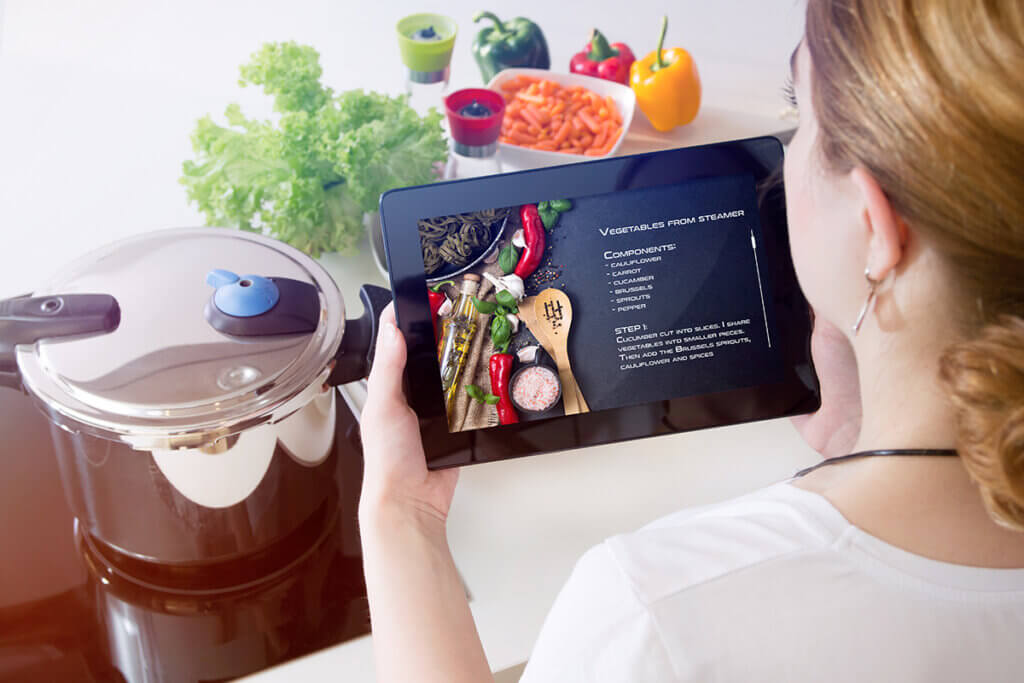

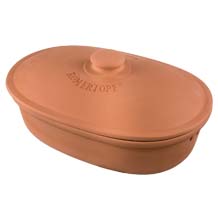
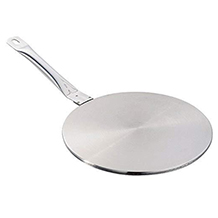
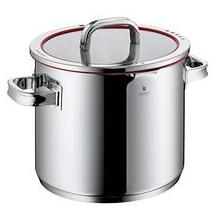
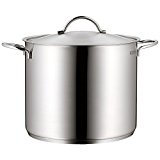

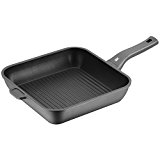

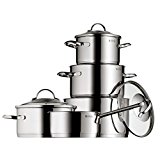
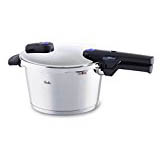

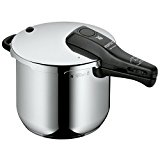
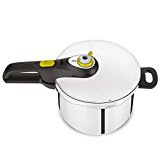
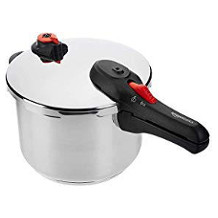
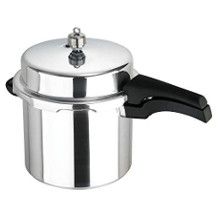
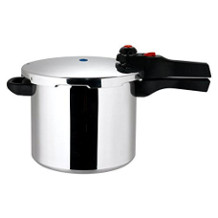
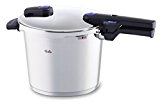
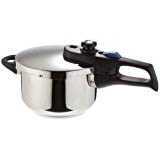
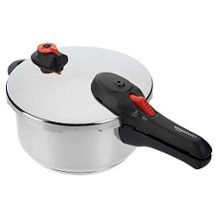
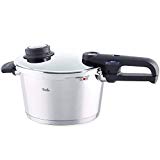



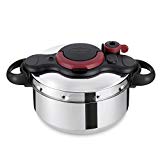

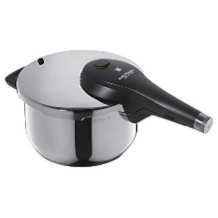
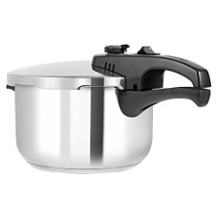
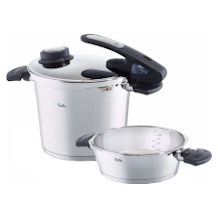

 1,025 reviews
1,025 reviews

